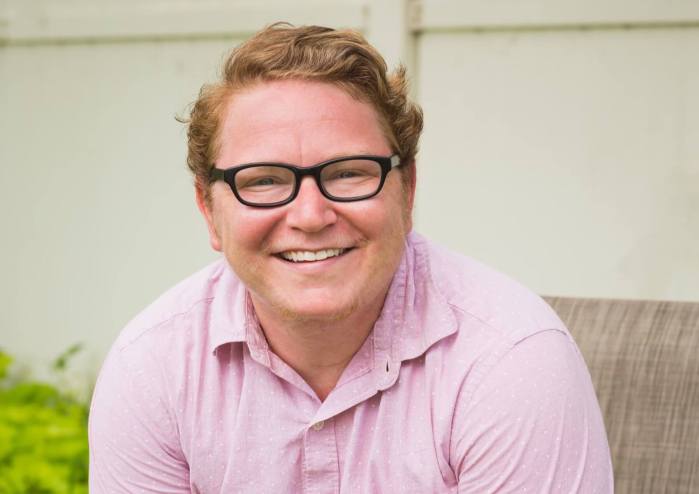AVP points to progress in 2005, but warns levels still high, climate remains hostile
The New York City Gay and Lesbian Anti-Violence Project last week reported a 13 percent decline in the number of violent attacks against LGBT people reported in the metropolitan area from 2004 to 2005—from 650 to 566 incidents.
Yet, the AVP was quick to note that given a dramatic rise of 26 percent in incidents from 2002 to 2003, it was too early to say that the overall higher plateau of anti-gay violence experienced locally and nationwide in recent years is reliably on the decline. Levels of attacks in 2005 were still more than 10 percent higher than in 2002 in the New York area.
"If we felt that the decline in reports last year was the front-end of a real trend, we’d be very happy," Clarence Patton, AVP’s executive director, said in a written statement. "However, none of us is under the illusion that it more than represents a brief respite from the unprecedented rise in anti-LGBT sentiment and violence in New York and across the country in the last few years."
Patton pointed out that reported cases of anti-gay violence are tracking higher year-to-date in 2006 here in New York and that he has heard similar reports from other anti-violence programs across the U.S.
“We’re fortunate here in New York to be in an extraordinarily tolerant and diverse city, however our tolerance and diversity does not protect us from the waves of political, cultural, and physical hatred and violence sweeping across our community and families nationwide,” Patton said, referring to rhetoric that he ties to spikes in violence against the community.
"After the 2004 election season was over and LGTB people had been used successfully in some places as grist for the right-wing mill, the hateful, anti-LGTB rhetoric died down a bit in many places,” Patton said, before turning his fire squarely on George W. Bush and his party. “Until his State of the Union this year, the president hadn’t mentioned same-sex marriage since before his re-election—but now we see anti-same-sex marriage amendments and anti-gay adoption bills on ballots across the country while Senate Majority Leader [Bill] Frist is determined to introduce the Federal Marriage Amendment in early June. We are clearly once again in the sights of those acting to marginalize us and incite violence against us."
The intensity of the violence against LGBT New Yorkers actually grew slightly in 2005 over the previous year. In both years, 72 victims required medical care, but the number of those who required longer-term hospitalization grew from 13 to 15. The number of attacks motivated by hatred of those living with HIV rose by a startling 78 percent from 85 in 2004 to 151 last year. Transgender bias was involved in 68 assaults in 2004, but 74 last year, a 9 percent increase.
The AVP report documented that the number of victims showed a similar level of decline from 2004 to 2005—804 to 689, or a 14 percent decline. The number of perpetrators fell only by 7 percent from 1,140 to 1,060.
AVP released statistics on the ethnicity and race of victims who reported attacks that are confounding. The number of Latino and African-American victims fell by 22 and 25 percent, respectively, despite several high profile recent brutal attacks. In February 2005, the dismembered remains of Rashawn Brazell, a 19-year-old African-American gay man from Bushwick, were found in several locations in Brooklyn. Last May, Kenmoore Thomas, a 32-year-old gay African-American man, was found brutally murdered in his apartment on Manhattan Avenue in Harlem. In April of this year, William Oliver, a 61-year-old African-American man, was found stabbed to death in Prospect Park’s Vale of Cashmere, a popular cruising spot, though it is not known whether the victim was gay. None of these murders has been solved.
Dwan Prince, a 28-year-old African-American gay man from Bushwick, was beaten so badly last June that he spent months in the hospital and is permanently disabled. Steven Pomie, a 23-year-old man, was convicted in March for that assault, which was judged a hate crime, and will spend at least 21 years in prison.
Despite last year’s decline in the number of African-American victims, homophobic assaults on gay black New Yorkers was nonetheless 17 percent higher than in 2002.
AVP’s data comes from the five boroughs, as well as Nassau and Suffolk Counties on Long Island, Westchester, and northern New Jersey. Half of the reported incidents took place in Manhattan, with 16 percent in Brooklyn, 10 percent in the Bronx, and 8 percent in Queens.
Nationwide, in data collected in 13 cities by the National Association of Anti-Violence Programs, the number of reported incidents declined by 13 percent in 2005, from 2,265 to 1,962. As in New York, the decline in the number of perpetrators did not match the fall-off in the number of victims or incidents.
Administrators of these programs across the U.S. expressed a view similar to Patton’s—that the political and cultural climate remains hostile and threatening toward the LGBT community. The lack of adequate funding is decried throughout the nation.
One of the bright spots anti-violence advocates are seeing nationwide is a dramatic decline in the number of victims under 30—25 percent nationwide, and by as much as 52 percent among those under 18. NCAVP attributes this progress to the success of outreach efforts targeting LGBT youth and those in their 20s.
gaycitynews.com


































